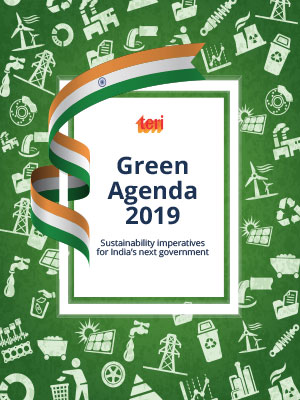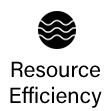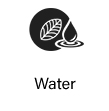TERI's analyses suggests that industrial sector and secondary particulates are key sources of air pollution that should be focussed on

Air pollution has emerged as a major concern for India, with more than 75% of cities where air quality monitoring is carried out violating prescribed standards. The true extent of the problem may become more evident when air quality monitoring is expanded to cities where it isn’t yet conducted. The MoEFCC has taken a step forward in launching the National Clean Air Programme (NCAP) to address this issue at a larger scale. The program focuses on tackling the issue at both urban and regional scale air pollution, with significant measures taken for control of emissions from transport (introduction of BS-VI norms), biomass (enhanced LPG penetration) and power (introduction of stringent emission norms) sectors.
Actions have been initiated in a number of areas, and our analyses suggests that two key sources of pollution now need to be focused on – a) the industrial sector and b) secondary particulates.
Addressing industrial pollution
TERI in its emission inventories estimated that industries contribute 51% to PM10, 35% to SO2 and 18% to NOx emission loads in India. Latest source apportionment study for Delhi conducted by TERI shows that industries contribute to 30% in PM2.5 concentrations during winters, highlighting the need to regulate emissions from this sector. Some of the issues around industrial pollution relate to siting of industries, use of solids fuels with high ash and sulphur content, inefficient technologies of combustion, limited use of efficient tail pipe control devices, and inadequate vigilance and enforcement.
To address this issue, the following steps can be implemented –
- Developing regulatory frameworks for penetrating gaseous fuels in the industrial clusters;
- Strengthening the capacities (manpower, technical, and financial) of pollution control boards for improved enforcement;
- Introducing and strengthening emission norms for PM2.5, NOx and SO2

Focus on reducing secondary particulates
TERI's assessment studies show that industries, power plants and transport sectors have sensitivities of about 34%, 31% and 19% towards secondary particulates formation in India. These particulates are formed by reactions of ammonia released from agricultural fertilizer use and livestock with SO2 and NOx released mainly from industrial, power and transport sources. Control of secondary particulates can be strengthened through the following measures –
- Implementing new stringent standards for NOx, and SO2 control for industries and power plants
- Installing technologies like FGDs and SCRs
- Reducing ammonia emissions from fertilisers and livestock

This article is part of our Green Agenda series of recommendations on various topics of environmental importance. To see other recommendations, click on the icons below





